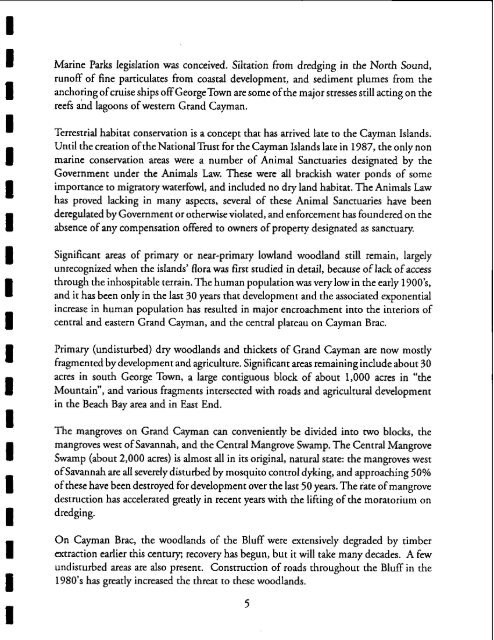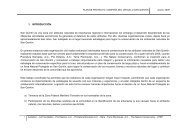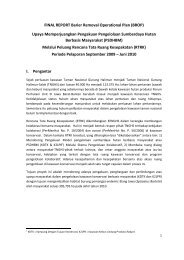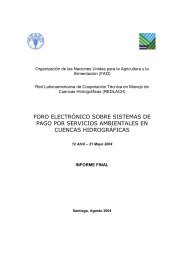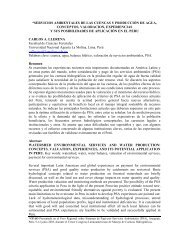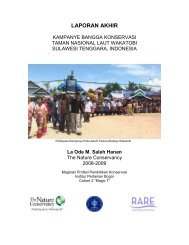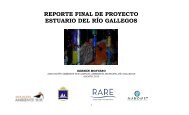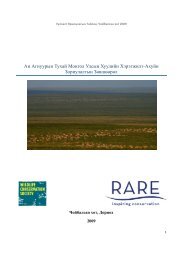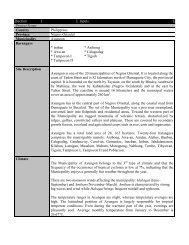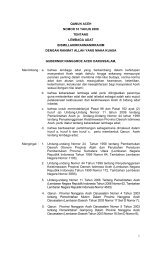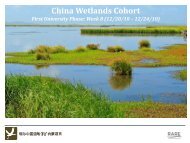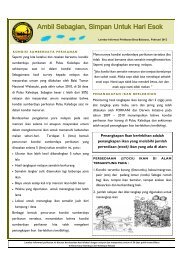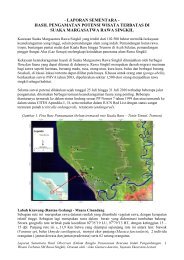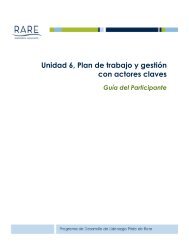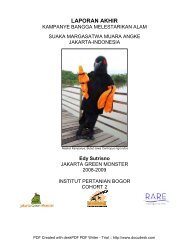Cayman Parrots - RarePlanet
Cayman Parrots - RarePlanet
Cayman Parrots - RarePlanet
Create successful ePaper yourself
Turn your PDF publications into a flip-book with our unique Google optimized e-Paper software.
Marine Parks legislation was conceived. Siltation from dredging in the North Sound,<br />
runoff of fine particulates from coastal development, and sediment plumes from the<br />
anchoring of cruise ships off GeorgeTown are some of the major stresses still acting on the<br />
reefi &d lagoons of western Grand <strong>Cayman</strong>.<br />
Terrestrial habitat conservation is a concept that has arrived late to the <strong>Cayman</strong> Islands.<br />
Until the creation ofthe National Trust for the <strong>Cayman</strong> Islands late in 1987, the only non<br />
marine conservation areas were a number of Animal Sanctuaries designated by the<br />
Government under the Animals Law. These were all brackish water ponds of some<br />
importance to migratory waterfowl, and included no dry land habitat. The Animals Law<br />
has proved lacking in many aspects, several of these Animal Sanctuaries have been<br />
deregulated by Government or otherwise violated, and enforcement has foundered on the<br />
absence of any compensation offered to owners of property designated as sanctuary.<br />
Significant areas of primary or near-primary lowland woodland still remain, largely<br />
unrecognized when the islands' flora was first studied in detail, because of lack of access<br />
through the inhospitable terrain. The human population was very low in the early 190OYs,<br />
and it has been only in the last 30 years that development and the associated exponential<br />
increase in human population has resulted in major encroachment into the interiors of<br />
central and eastern Grand <strong>Cayman</strong>, and the central plateau on <strong>Cayman</strong> Brac.<br />
Primary (undisturbed) dry woodlands and thickets of Grand <strong>Cayman</strong> are now mostly<br />
fragmented by development and agriculture. Significant areas remaining include about 30<br />
acres in south George Town, a large contiguous block of about 1,000 acres in "the<br />
Mountain", and various fragments intersected with roads and agricultural development<br />
in the Beach Bay area and in East End.<br />
The mangroves on Grand <strong>Cayman</strong> can conveniently be divided into two blocks, the<br />
mangroves west of Savannah, and the Central Mangrove Swamp. The Central Mangrove<br />
Swamp (about 2,000 acres) is almost all in its original, natural state: the mangroves west<br />
ofsavannah are all severely disturbed by mosquito control dyking, and approaching 50%<br />
of these have been destroyed for development over the last 50 years. The rate of mangrove<br />
destruction has accelerated greatly in recent years with the lifting of the moratorium on<br />
dredging.<br />
On <strong>Cayman</strong> Brac, the woodlands of the Bluff were extensively degraded by timber<br />
extraction earlier this century, recovery has begun, but it will take many decades. A few<br />
undisturbed areas are also present. Construction of roads throughout the Bluff in the<br />
1980's has greatly increased the threat to these woodlands.


